One place that has been long on the list of 'Must Visit Soon' has been Buckler's Hard on the River Beaulieu in Hampshire, a beautifully preserved and maintained little hamlet given over to tourism, with a small maritime museum and a modern yachting marina, that recall's through its buildings and facilities the glory days of being a major eighteenth century naval shipbuilding centre.
The construction that happened here made a major contribution to British naval supremacy in the late 18th and early 19th century with the building and launching of fifty-four warships from 74-gun third-rates to 14-gun brigs and lowly 4-gun transports but also included such famous ships as 'Nelson's favourite, HMS Agamemnon 64-guns and the 36-gun frigate Euryalus, nicknamed 'Nelson's Watchdog' after her reporting the movements of the Franco-Spanish fleet in Cadiz harbour shortly before the battle of Trafalgar.
In 1203 King John founded the Beaulieu Abbey as a Cistercian abbey on the River Beaulieu in Hampshire, populated by thirty monks sent from the abbey of Cîteaux in France.
In April 1538 the abbey was confiscated by King Henry VIII under the Dissolution of the Monasteries, and the estate was purchased by Sir Thomas Wriothesley, later 1st Earl of Southampton, who built the first Beaulieu Palace House which subsequently passed through marriage into the Montagu family and is still owned by the 1st Earl's descendant, the 4th Baron Montagu of Beaulieu.
As well as 3,441 hectares of estate lands the new estate also came with rights to the river bed, the river being an important twelve mile long asset that saw the establishment of three small settlements along its banks, with Beaulieu developing close to the original abbey and its bridge crossing nearest to the sea, Lepe Hamlet at the entrance to the river; and the third, described as an accident of history, Buckler's Hard, planned as a sugar port, Montagu Town, in the 1720's but eventually to flourish as a naval shipbuilding centre, close to the timber resources of the New Forest and within easy access of the Portsmouth naval base with stores for fitting and finishing warships.
At the start of the eighteenth century, Buckler's Hard was little more than a convenient landing place on the Beaulieu River, the 'hard' being the one of the few places where gravel ran down to the watermark.
 |
| John, Second Duke of Montagu, circa 1740 (1690-1749) - George Knapton. |
In 1722, John, Second Duke of Montagu had ambitious plans to build a free port for the import and export of sugar from the West Indies, the settlement to be called Montagu Town, in combination with a plan to colonise the islands of St Lucia and St Vincent.
 |
| Map showing the position of St Lucia and St Vincent in the West Indies and the focus of the Duke of Montagu's failed expedition in 1722, |
The expedition organised by the Duke and led by Captain Nathanial Uring consisted of seven ships and cost around £40,000 to prepare with the equipage of cannon, muskets and bayonets together with two prototype machine-guns, the invention of Sussex lawyer, James Puckle, using a revolving block mechanism that held seven to nine bullets, the guns never subjected to test firing.
 |
| Puckle's Machine-gun in the Buckler's Hard Museum. |
With seven houses already built and nearby woodland cleared in 1731, all at the Duke's expense, a new reason for being was needed following the Caribbean failure, and with the Royal Dockyards struggling to keep pace with the demand for new warships, help from civilian shipbuilders lent the new hamlet that much needed reason, this following the construction and launching of the 48-gun Salisbury in 1698, probably from Bailey's Hard, about a mile upstream.
In the 1740's Buckler's Hard thought to have been named after the Buckle family, one of the first to register in the new Beaulieu Parish, was chosen for the site of the new civilian yard, ideally situated as it was, surrounded by woods of oak and elm needed to build ships and owned by the Duke.
.jpg) |
| The great Royal Dockyard in Deptford in 1755 from which Henry Adams was sent from to Buckler's Hard to supervise the building of the Surprise. |
 |
| Henry Adams, Master Shipbuilder, 1713-1805 |
In 1744 Henry Adams, a master shipwright, was sent from Deptford Dockyard to Buckler's Hard by the Admiralty to oversee the building of these ships by Wyatt & Co., and it would be Adams having seen several different tenants attempt to make a commercial success out of building naval ships at the Hard between 1744 and 1749, who would take over the tenancy, launching his first ship, the 24-gun Mermaid, that same year, managing to keep his business going and reaping the rewards of the boom in demand for ships with the outbreak of the Seven Years War in 1756.
 |
| A reconstruction of Henry Adams' office, showing Adams discussing the building of the Agamemnon with James Dann, the Navy Board Overseer. |
In 1760 following the death of his first wife, Elizabeth Smith, Adams married Anne Warner, having eight children, two of whom, Balthazar and Edward succeeded their father as tenants of the shipyard in 1793, but with Adams senior keeping an interested eye on the business of the yard from a specially constructed crow's nest built onto his house
Sadly Henry Adams died in 1805, before news of Nelson's victory at Trafalgar reached Britain and without knowing the part his ships built at Buckler's Hard played at the battle.
Chichester spent 226 days at sea in his 54 foot ketch, with only one stop in Sydney, setting set seven records:
Soon after his return, Chichester was knighted for “individual achievement and sustained endeavour in the navigation and seamanship of small craft”. For the ceremony, the Queen used the sword which had belonged to Sir Francis Drake, the first Englishman to complete a circumnavigation with his crew.
 |
| Inboard profile plan of HMS Conway - RMG The Conway class of ten 20-28gun 6th-rates saw nine of them built and launched in 1814, that included the Towey at Buckler's Hard. |
Balthazar and Edward Adams continued to build ships at Buckler's Hard, but the business ran into difficulties, with inflation combined with shortages of timber and manpower leading to fewer large naval contracts that saw the last naval ship, the 24-gun Towey, being launched in 1814
 |
| Two motor-torpedo-boats undergoing repair or servicing at Buckler's Hard, part of the flotillas that patrolled the Channel against German E-boats and submarines in WWII |
During World War II, the village was used to build motor torpedo boats, and the river was a base for hundreds of landing craft for the Normandy invasion, Operation Overlord. Today the hamlet is given over to tourism, with a small maritime museum and a modern yachting marina.
Buckler's Hard was where Sir Francis Chichester began and finished his solo voyage around the world in the Gipsy Moth IV, returning to Buckler’s Hard on 17th September 1967, his 66th birthday, to the recognition of cheering crowds and the sound of horns and sirens that greeted him, whilst an 18-gun salute marked his return to shore.
Chichester spent 226 days at sea in his 54 foot ketch, with only one stop in Sydney, setting set seven records:
- Fastest voyage around the world in a small vessel – almost twice as fast as the previous record
- First true solo circumnavigation of the world via the Capes of Good Hope, Leeuwin and Horn
- Longest passage made by a small vessel without calling in to port – on the homeward leg from Sydney to Plymouth 15,250 miles
- Longest passage made by a solo sailor without calling in to port – on the homeward leg, almost twice as long as the previous record
- Longest distance covered by a solo sailor in a week – twice broke the record by more than 100 miles
- Fastest solo speed record for a long passage – twice broke the record, going from Plymouth to Sydney in 107 days at an average of 131 miles a day and from Sydney to Plymouth in 119 days at an average of 130 miles a day
- Set a solo record by travelling 1,400 miles in 8 days during the voyage
For our visit to this remarkable place, we decided to start on the part of it that explains the whole story, namely the River Beaulieu, taking full advantage of the weather and grabbing a seat on the midday river cruise from the Hard up to the mouth of the river and back to better appreciate the place from the water.
 |
| Grey mullet, cruising close to the jetty, and smaller fish crowding in close to shore were nice to see in a very busy river. |
One thing that was immediately noticeable and very nice to see whilst waiting to board the boat was the river teeming with fish, from small fry close into shore to large grey mullet cruising out in the deeper water, indicating a clean river free from pollution despite the amount of boat traffic that was all to obvious.
My mind's eye immediately imagined David Bell's great picture below of the launch of Euryalus with Swiftsure close alongside, a year away from joining her afloat and Agamemnon being launched as envisaged by Harold Wyllie in a similar rendition.
One of the best parts of our hobby is combining the history with exploring the ground over which it occurred and envisaging the events that took place, a more problematic challenge when looking at naval battles, many miles out in the oceans and seas, but here in a place like this you can actually see a moment in time in the history of naval warfare captured in the view .
 |
| One of the smaller wharfs used for constructing smaller projects such as the Archer class 12-gun brig Growler, launched on the 10th August 1804. |
Continuing on down the river I couldn't help noticing a very appropriately named craft, considering her home port.
 |
| The very appropriately named Caronade hailing from Buckler's Hard |
A little further on down as we neared the mouth of the river, we paid our respects to one of the locals out for an early afternoon sunbathe, but I couldn't help hoping he had remembered to bring the high factor lotion as the sun was becoming fearsomely hot as it rose higher in a cloud free azure blue sky.
The first building that beckoned our attention on the way to the pub was the building that once housed the blacksmith's shop together with two forges that produced the nails and other small iron work for the ships but today is used to house a video presentation on the history of Buckler's Hard and the building of perhaps one of its most famous ships, the 64-gun Agamemnon together with a very fine scale model of her.
Agamemnon, joined with the Mediterranean fleet soon after commissioning in January 1793 under Captain Horatio Nelson, and under Vice-Admiral William Hotham, she participated in the Battle of Genoa when a French fleet, comprising 15 ships of the line, was sighted on the 10th of March 1795.
 |
Sketch of HMS Agamemnon fighting French ship Ca Ira at the Battle of Genoa, 1795 - Nicholas Pocock (NMM) |
Three days later, after the French had shown no signs that they were willing to give battle, Admiral Hotham ordered a general chase. The French ship Ça Ira 80-guns lost her fore and main topmasts when she ran into one of the other ships of the French fleet, Victoire 80-guns, allowing HMS Inconstant 36-guns to catch up with and engage her.
Agamemnon 64-guns and Captain 74-guns came up to assist soon after, and continued firing into the French ship until the arrival of more French ships led to Admiral Hotham signalling for the British ships to retreat, an order that infuriated the aggressive Nelson, however Ça Ira was captured the following day by Captain and Bedford, along with Censeur 74-guns which was towing her.
Her general characteristics were:
Tons burthen 1384 tons (bm)
Length of gundeck 160 feet
Beam 44 feet, 4 inches
Depth of hold 19 feet
 |
| Agamemnon depicted leaving Portsmouth harbour - David Bell |
Her armament consisted of:
Gundeck: 26 x 24-pounder long guns
Upper gundeck: 26 x 18-pounder long guns
Quarterdeck & Forecastle: 10 (QD) & 2 (Fc) x 9-pounders long guns and 6 (QD) x 18-pounder carronades & 2 (Fc) x 24-pounder carronades
 |
| JJ's Wargames- All at Sea, Two for Trafalgar |
Battle of Ushant, 1781
Battle of the Saintes, 1782
Battle of Genoa, 1795
Battle of the Hyères Islands, 1795
Battle of Copenhagen, 1801
Battle of Cape Finisterre, 1805
Battle of Trafalgar, 1805
Battle of San Domingo, 1806
Battle of Copenhagen, 1807
Battle of the Saintes, 1782
Battle of Genoa, 1795
Battle of the Hyères Islands, 1795
Battle of Copenhagen, 1801
Battle of Cape Finisterre, 1805
Battle of Trafalgar, 1805
Battle of San Domingo, 1806
Battle of Copenhagen, 1807
Agamemnon's later career was served in South American waters off Brazil and by then her worn-out and poor condition contributed to her being wrecked when, in June 1809, she grounded on an uncharted shoal in the mouth of the River Plate whilst seeking shelter with the rest of her squadron from a storm.
All hands and most of the ship's stores were saved, but the condition of the ship's timbers made it impossible to free her, and her captain was cleared of responsibility for the ship's loss thanks to documents detailing her defects.
In 1993, the wreck of Agamemnon was located, and several artefacts have since been recovered, including one of her cannons and an original piece of her coppering to be seen in the Buckler's Hard Maritime Museum.
After checking out the Agamemnon, and a well earned refreshment break we worked our way up through the village and more specifically the houses that have been opened to the public with displays of life in these period buildings for the workers and their families.
As well as Agamemnon there are some other notable ships that were built at Buckler's Hard, and while enjoying my lunch it was an impressive list of ships that I perused in the Buckler's Hard guide book
HMS Spencer 74-gun third-rate, 1800
Five third-rate 74's were built and launched at the Hard with the largest built here being the Spencer at 1917 tons, launched on the 10th of May 1800.
_RMG_J3257%20(1).png) |
| HMS Spencer would be the largest warship built at Buckler's Hard. The 74-gun third rate displaced 1917 tons, with a length of 181 feet and beam of 49 feet, 6 inches. |
Her battle honours would include the First and Second Battle of Algeciras 6th and 12th of July 1801 and was at the Battle of San Domingo 6th February 1806 where she engaged and took the French 74-gun Indivisible.
HMS Surprise, 24-gun sixth-rate, 1745
The first ship built at Buckler's Hard was HMS Surprise, a 24-gun sixth-rate ship-sloop built to the 1741 revised specifications of the 1719 Establishment, a set of mandatory requirements governing the construction of all Royal Navy warships capable of carrying more than 20 naval long guns and designed to bring economies of scale through uniform vessel design, and ensure a degree of certainty about vessel capability once at sea, specifying the overall dimensions of each type of warship, and other factors used in constructing the ship, down to the thickness of timbers ("scantlings") used in construction and planking.
Adams was already contracted at the time to build the 64-gun Agamemnon, but his second launch way was empty and his workforce underemployed, so he used his own capital for the venture, as well as many of the timbers that were too small for the larger ship.
HMS Heroine, 32-gun fifth-rate, 1783
Launched in 1783, the twenty fifth warship to be built at the Hard, the 32-gun frigate HMS Heroine represented a calculated risk to Henry Adams, as she was built on speculation, not in response to a firm order from the Navy.
 |
| Heroine was an Hermione class 32-gun frigate of which there were seven built, including this, the drawing for HMS Andromeda launch a year after the Heroine. |
Adams was already contracted at the time to build the 64-gun Agamemnon, but his second launch way was empty and his workforce underemployed, so he used his own capital for the venture, as well as many of the timbers that were too small for the larger ship.
The gamble paid off and the Navy purchased Heroine on completion for £10,274, or £1,941,287.74 in today's money.
 |
| The cutting out of HMS Hermione off Puerto Cabello by the boats from HMS Surprise - Nicholas Pocock. JJ's Wargames - The Black Ship & Mutiny on the Spanish Main - Dudley Pope & Angus Konstam |
Heroine was a Hermione class 32-gun frigate built to the same plans as her infamous sister ship HMS Hermione launched in Bristol in 1782 and whilst under the command of her tyrannical captain, Hugh Pigot was involved in the bloodiest mutiny in British naval history in September 1797 which saw Pigot and most of his officers killed.
The mutineers then handed the ship over to the Spanish Empire on the 27th September 1797 and the Spanish renamed her Santa Cecilia, however on the 25th of October 1799, Captain Edward Hamilton, aboard the 32-gun HMS Surprise, cut her out of Puerto Cabello harbour and she was returned to Royal Navy service under the name Retaliation with the Admiralty later renaming her Retribution on the 31st of January 1800. I covered these events in my October 2023 book review with a link above.
HMS Thames, 32-gun fifth-rate, 1758
HMS Thames, a Richmond class 32-gun frigate was launched by Henry Adams on the 10th of April 1758, and unusually she was built of imported oak, with Adams himself providing yards, masts, furniture and stores. It seems likely that the strains of war against France were beginning to tell on the Royal Dockyards.
 |
| A contemporary full hull model of a ‘Richmond’-class 32-gun frigate (circa 1757) - RMG. Although not named the model gives a good representation of the style and look of HMS Thames. |
Thames enjoyed a long career seeing service in the Seven Years War, the American War of Independence and the Revolutionary Wars against France, until her capture by a French squadron in the Bay of Biscay consisting of three frigates and a brig (The 40-gun frigate Carmagnole (flag), the 36-gun frigates Résolue and Sémillante, and 16 gun brig-corvette Espiègle.) under the command of Captain Zacharie-Jacques-Théodore Allemand, with the Thames making urgent repairs to the damage she had received after beating off the French 40-gun frigate Uranie and given a broadside to her stern by one of the newly arrived French opponents, and in no state to resist, struck her colours.
 |
| The Action of 24 October 1793 between Uranie and Thames |
She was taken into French service as the Tamise, but on the 8th June 1796 in company with the 36-gun frigate Tribune and the 18-gun corvette Légère, fifty miles west of the Isles of Scilly, they encountered the British frigates Unicorn 32-guns and Santa-Margarita 36-guns, which gave chase and resulted in individual actions between Santa-Margarita and Tamise and the Unicorn versus Tribune as the Légère broke company and departed, seeing both French frigates taken in their respective fights.
_by_H.M.S._Santa_Margarita,_under_the_command_of_Captain_T._Byam_Martin,_off_the_Scilly_Isles.jpg) |
| The capture of the French Frigate Tamise by Santa Margarita, under the command of Captain T. Byam Martin, off the Scilly Isles, 8 June 1796 - Nicholas Pocock |
I ran a refight of the chase of the Tamise as an early test game of War by Sail way-back in 2020, as I started getting going with the 1:700 collection and will likely come back to this action with more appropriate models.
 |
| Santa Margarita in pursuit of Tamise, from our test game back in 2020 JJ's Wargames- All at Sea, First Games, New Rules |
HMS Santa Margarita, 36-gun fifth-rate, 1774
HMS Santa Margarita mentioned in the account above of the recapture of the Tamise (HMS Thames) was a 36-gun fifth-rate frigate, that had been originally built for service with the Spanish Navy, but was captured off Lisbon after five years in service, eventually spending nearly sixty years with the British. |
Action Between the 'Amazone' and HMS 'Santa Margarita': Cutting the Prize Adrift, 30 July 1782 - Robert Dodd |
As well as taking on contracts to build new ships, Adams was also contracted to repair and rebuild them, which included the Santa Margarita, following her service during the American War of Independence and between 1791 and 1793 he rebuilt the former Spanish frigate, that would be instrumental in returning to the Royal Navy one of his former projects.
HMS Indefatigable, 64-gun third-rate, reduced to a 44-gun razee, 1795
HMS Indefatigable was one of the Ardent-class 64-gun third-rate ships-of-the-line designed by Sir Thomas Slade in 1761 for the Royal Navy and was built as a ship-of-the-line, but most of her active service took place after her conversion to a 44-gun razee frigate. |
HMS Indefatigable 64-guns - Derek G. M. Gardner |
 |
| HMS Indefatigable 64-guns |
She had cost £25,210 4s 5d (about £4,514,324.89 today) to build; her total initial cost including fitting out and coppering was £36,154 18s 7d. (about £6,741,466.41 today) By that time, she was already anachronistic for the role of a ship of the line, and was never commissioned in that role.
 |
| HMS Indefatigable 44-gun fifth-rate - Derek G. M. Gardner |
 |
| HMS Indefatigable 44-gun fifth-rate |
The original intention was to retain her twenty-six 24-pounder guns on her gundeck, and to mount eight 12-pounder guns on her quarterdeck and a further four on her forecastle, which would have rated her as a 38-gun vessel; however, it was at this time that the carronade was becoming more popular in the Navy, and her intended armament was altered on the 5th of December 1794 with the addition of four 42-pounder carronades to go on her quarterdeck and two on her forecastle, and she was thereafter rated as a 44-gun fifth-rate frigate.
 |
| Sir Edward Pellew by Sir Thomas Lawrence, 1797 |
Perhaps Indefatigable's most famous commander was Sir Edward Pellew, appointed commodore of the Western Frigate Squadron in 1794 and a year later took command of HMS Indefatigable, the ship with which he is most closely associated; the squadron also comprising the frigates HMS Argo, HMS Concord, HMS Révolutionnaire, and HMS Amazon.
 |
Indefatigable, 44, with Jason, Concorde and Duke of York (lugger) leaving Falmouth, April, 1795 - Derek G. M. Gardner. |
He was a good swimmer and noted for saving the lives of several seamen who had fallen overboard, with his most striking life-saving event happening on the 26th of January 1796 when the East Indiaman Dutton was carrying more than four hundred troops, together with many women and children, and ran aground under Plymouth Hoe.
Due to the heavy seas, the crew and soldiers aboard were unable to get to shore, and Pellew swam out to the wreck with a line and, with help from young Irishman Jeremiah Coghlan, helped rig a lifeline that saved almost all aboard, for which feat he was created a baronet on 18 March 1796.
Indefatigable took part in some famous sea-fights which included the Action of the 13th of January 1797 with an engagement off the Penmarks involving the two frigates Indefatigable, under Pellew, and Amazon against the French Droits de l'Homme 74-guns, that ended with Droits de l'Homme being driven onto shore in a gale and also the Amazon running onto the shore, but with almost her entire crew surviving both the battle and the grounding to be captured.
They were carrying bullion from Montevideo, South America to Spain, which at the time was a neutral country, but was showing strong signs of declaring war in alliance with Napoleonic France.
 |
| Capture and destruction of four Spanish frigates, 5 October 1804 - Francis Sartorius |
Acting on Admiralty orders, Moore required the Spaniards to change their course and sail for England but Admiral Bustamente refused and a short engagement ensued, which saw first the Mercedes blow up, Indefatigable capturing Medée, Lively capturing Clara, and after a further chase, Lively and Medusa capturing Fama.
 |
| Mrs Arabella Burlace at work in the living room. |
Many skilled craftsmen were needed to build the large naval ships at Buckler's Hard, but some of the workforce was temporary and itinerant, living in lodgings, and staying only for the duration of a contract.
Others settled in the village and of these the shipwrights earned the most, taking home around 25 to 30 shillings a week, with their pay linked to their productivity, based on the ship length and the completion time for each part.
There was a shortage of shipwrights, who until the end of the Napoleonic Wars in 1815 had to serve a seven-year apprenticeship, so they could enjoy almost continuous employment.
 |
| The stairs in these cottages are like climbing the north face of the Eiger, and reminded me of my Nan's cottage when I was a nipper. |
The recreated Shipwright's Cottage illustrates the difference in living standards between skilled and unskilled workmen.
Although Burlace was a skilled craftsman, he fell on hard times towards the end of his life, with an injury in 1812 preventing him from working and he had to apply for poor relief from the Beaulieu Parish, who passed the claim onto Deptford, with a legal claim for that liability to be established before payments could be made.
 |
| Anne and Lucy Burlace upstairs in the main bedroom |
Mrs Burlace ran a Dame School from the cottage with her daughter for a short time until the poor relief was paid, and Thomas would die in 1816, causing yet more issues for the poor relief to be paid to his widow, that saw Arabella dying in 1820 aged 82.
Times were very hard for people back then, something easily overlooked in the comparatively luxurious lifestyles modern folks live today.
The Labourer's Cottage has been arranged to show the housing arrangements of James Bound and his family, showing the very cramped living conditions compared to those enjoyed by the Burlace's, however it could have been worse, with some of these small cottages accommodating one family down stairs and one upstairs in a typically four room cottage.
When the shipyard needed extra labour, it called upon the inhabitants of Beaulieu Rails, on the north western edge of the estate bordering the New Forest.
The hours were long, from dawn to dusk in winter and from 6am to 6pm in the summer, with employment being as irregular as farm work was seasonal and shipyard work relied on there being ships to build.
 |
| James Bound a tenant and occasional farm labourer sits at the table as his two sons George and John play with wooden toys, probably made from chips from the ship yard |
Those who were unable to work for long periods became dependent on the Parish for their subsistence under the terms of the Poor Law, with a Poor Rate levied on wealthier inhabitants such as Henry Adams and Charles Pocock, who ran the the nearby ironworks, and owned a factory in Reading, to pay for food shelter and clothing and sometimes medical treatment; with the rate equating to in 1794, one shilling in the pound on property value, and Henry Adams paid £2 6s 5d as his contribution.
 |
| The kitchen, complete with the resident mouse on the nearest corner of the table. |
Not many of the names of the hundreds of men who built the ships at Buckler's Hard are known today, and these recreations of the lives of some of them and their families that have been revealed serve as a wonderful tribute to their lives, lived in extraordinary times and in a time of such hardships for ordinary people, where one false step or careless act could see these people transported or worse for acts committed simply to survive.
Buckler's Hard was not a typical village of the period, being a satellite of Beaulieu, 2.5 miles upstream, and with all the houses the property of the Lord of the Manor of Beaulieu, with even Henry Adams its most wealthiest inhabitant being a tenant and paying rent for the shipyard and associated properties.
The church, steward and parson were also at Beaulieu, putting the landlords of the two inns near the top of the social pecking order in the village.
Unsubstantiated stories suggest the inn was a centre for smuggling under the landlord Joseph Wort,
and the reconstruction of the interior in its original location shows an evening in the 1790's with all the key characters depicted in it based on known Buckler's Hard residents from that time.
At the bar, landlord Joseph Wort is behind the bar selling ale brewed in Beaulieu by Westbrooks and standing next to him is Charles Pocock ironworks and factory owner, and friend of Henry Adams, whose daughter Lucy, he married in 1795.
He is discussing the iron trade with Richard Smith, one of two blacksmiths in Buckler's Hard.
On the wall can be seen an 'Act of Parliament' clock, so called because in the 18th century a charge was levied on every clock, known simply as the 'Clock Tax', so to encourage people to come into inns and other public places, large clocks like this one were put up for all to see.
On the way to the museum we stopped to look at the SS Persia memorial recording the sinking of the P&O passenger ship by U-38 off Crete on the 30th December 1915 with the loss of 343 souls, on her way from London to India through the Mediterranean.
Among her passengers was John, 2nd Lord Montagu of Beaulieu, and his mistress and personal assistant, Eleanor Thornton, the inspiration for the famous Rolls-Royce mascot, 'Spirit of Ecstasy', for which she modelled, and sadly, she was one of the 343 people lost which included 119 passengers of whom 46 were women and 13 were children.
Described in the British press, as a 'Piratical Attack', the German government issued denials, with the following report received from James W. Gerard, the US Ambassador in Berlin, stating
 |
| The recovered heavy duty door of the bullion room from the SS Persia |
I took lots of pictures of the artefacts recovered but don't intend covering the exhibition in this post in any great depth (no pun intended) as the intention is to look at the 18th and early 19th century ship building activity and the warships that served in the Royal Navy that were built here.
At the entrance to the museum are a very nice pair of carronades, one of which was fired in 1967 to welcome back Sir Francis Chichester on his return up the Beaulieu River.
The wax medallions seen below are of two victorious admirals of the era, immediately below, Richard, 1st Earl Howe (1726-1799), who won the victory at the Glorious First of June in 1794, and very appropriate given my own current project, 1st Viscount Adam Duncan, next below, victor at the Battle of Camperdown, October 11th 1797 with one of the ships under his command on that day and built at Buckler's Hard in 1791, being HMS Beaulieu.
No matter what the era or subject be in Roman towns, villas and military sites, to here at an 18th century shipyard, the human aspect of the place is only enhanced with a name of a particular individual associated with the place, and below, the gravestone of Michael Silver who worked on the ship most famously associated with Buckler's Hard has cemented his place in posterity.
Built as a speculative project by Henry Adams, and bought by The Admiralty in 1790 for £12,397, she was launched in 1791 and with a crew of 280, saw service in the West Indies, being present at the capture of Martinique in 1794, later in 1797 she took part in the Battle of Camperdown.
She then moved to the Mediterranean, where under Captain Robert Barker she captured several French prize ships.
Following repairs in the 1760's, Kennington served in the West Indies, before being broken up at Sheerness in 1774.
I came to Buckler's Hard very much with the intent on better understanding the ship building activity that happened here in the golden age of British naval history and the museum compliments the buildings and the location with some excellent models, artefacts and displays that really make that history a more vivid experience.
Having visited the recreated examples of the workers cottages it was great to see the examples of items discovered over the years capturing the period and related to the activities of the men employed in the yard that included the clay pipes, iron nails and bolts together with the remnants of bottles likely broken against the sides of ships during launchings.
 |
| Richard, 1st Earl Howe (1726-1799) |
 |
| 1st Viscount Adam Duncan (1731-1804) |
 |
| A news bulleting from 1805 announcing the victory at Trafalgar. |
 |
| Likely launch ceremony bottles |
The museum has a very informative section covering the practicalities of ship construction at this time, from the selection of the best trees to be cut for a particular project to the design drawings and artwork produced to guide the shipwrights in the build and construction.
 |
| Henry Adams drawings for the figureheads for Greyhound, Vigilant, Brilliant and bottom right, Triton. |
 |
| Plan for Termagant (1796); Bittern (1796); Cyane (1796); Plover (1796) |
The models below of the yard and the construction process help display more vividly than drawings the labour intensive activity involved together with the organising of the yard and its stocks of timber, in an era without heavy machinery to assist the process, and with the whole venture a private concern under Adams and his sons, looking to win orders from the Navy and turn a profit from each project.
The museum is home to some impressive models of ships built here with the first one pictured here reminding me that I must find a better model of this ship for my Camperdown collection going forward.
HMS Beaulieu (1791) 40-gun, fifth-rate.
This 1:48 scale model made by A.W Curtis.
I covered her history in more detail in a recent post, see link below.
 |
| JJ's Wargames - All at Sea, Battle of Camperdown Project |
HMS Kennington (1756) 20-gun, sixth-rate, later Gibraltar Class
Launched in 1756, the Kennington saw service in the Seven Years War in both North America and Europe, and after previous failed attempts, in 1758 took part in the successful capture of Louisbourg in Canada, a major French fortress and supply base, that saw the French squadron in the harbour destroyed.
 |
| Engraving made by Canot after a painting by Richard Paton. Burning of the French ship Prudent (74 guns) and capture Bienfaisant (64 guns), during the siege of Louisbourg in 1758. |
Her general characteristics were:
Tons burthen 437 45/94 tons (bm)
Length of gundeck 107 feet, 8 inches
Beam 30 feet, 6 3/4 inches
Depth of hold 9 feet, 8 inches
Her armament consisted of:
Gundeck: 20 x 9-pounder long guns.
HMS Euryalus (1803), 36 guns, fifth-rate
The 36-gun Apollo-class frigate that saw service in the Battle of Trafalgar and the War of 1812.Her first action occurred on the 2nd and 3rd of October 1804 when, captained by Henry Blackwood, she participated in an attack on French vessels off Boulogne pier.
The raid differed from the conventional tactics of naval assaults of the period by utilizing a wide range of new equipment produced by the American inventor Robert Fulton, with the backing of the Admiralty, but despite its ambitious aims the assault produced little material damage to the French fleet anchored in the harbour, but did perhaps contribute to a growing sense of defeatism amongst the French as to their chances of crossing the English Channel
Blackwood was well known to Nelson with their friendship confirmed after the action with the 80-gun French ship Guillaume Tell, one of the survivors of the Battle of the Nile and which attempted to escape the blockade of Malta but was spotted and tracked by Blackwood in the 36-gun frigate Penelope, who assisted in the capture of her with some well directed stern rakes before support came up in the form of HMS Lion 64-guns and HMS Foudroyant 80-guns and after a gallant resistance the Frenchman struck.
Nelson wrote from Palermo (5th of April 1800) to Blackwood himself:
'Is there a sympathy which ties men together in the bonds of friendship without having a personal knowledge of each other? If so (and I believe it was so to you), I was your friend and acquaintance before I saw you. Your conduct and character on the late glorious occasion stamps your fame beyond the reach of envy. It was like yourself; it was like the Penelope. Thanks; and say everything kind for me to your brave officers and men'.
In 1805 Blackwood and Euryalus led a squadron of four other frigates in watching Cádiz to report the movements of the combined French and Spanish fleets anchored there and when the combined fleet sailed from Cádiz on the 20th of October, shadowed through the night by Euryalus and the others that reported its position to the Royal Navy fleet on the horizon.
With battle imminent the following morning, Captain Blackwood suggested that Admiral Nelson transfer from Victory to the faster Euryalus, the better to observe and control the engagement but Nelson declined the offer.
 |
| Euryalus and the schooner Pickle 'stand off' in our Trafalgar refight 2023 JJ's Wargames - The Battle of Trafalgar 2023 |
Euryalus stood off with the other light ships of the British fleet until the late afternoon when she took the badly damaged Royal Sovereign in tow and turned her to engage the French ship Formidable.
Following the death of Admiral Nelson, Vice-Admiral Collingwood transferred his flag from Royal Sovereign to Euryalus and she became the British fleet's flagship for the next ten days.
After the battle Euryalus took on survivors from the French ship-of-the-line Achille, as well as the captured French Admiral Pierre de Villeneuve, and Blackwood also received the surrender of the Spanish ship Santa Ana, after two raking broadsides to the stern by Royal Sovereign and Belleisle had caused her to strike her colours.
 |
| My interpretation of Euryalus which I built back in 2020 JJ's Wargames - All at Sea, HMS Euryalus |
Euryalus again took Royal Sovereign in tow but the two ships collided during a sudden squall, badly damaging the frigate's masts and rigging. Once repairs were completed, Euryalus went into Cádiz Harbour to allow Blackwood to negotiate an exchange of prisoners and the repatriation of French and Spanish wounded.
 |
The French Admiral on Board the Euryalus, print, Thomas Rowlandson |
On the 31st of October, Euryalus set sail for England with Admiral Villeneuve as a prisoner.
Below is another fine model of the 64-gun Agamemnon together with a piece of her original copper recovered from her wreck site in the mouth of the River Plate.
As well recounting the story of the work carried out in Bucklers Hard, and the ships they constructed there is a very interesting display of items recounting the lives of the men that sailed on those ships from the admirals and captains to the men, women and ships boys that crewed them.
 |
| Scene on the messdeck |
A rather dapper looking 'Jolly Jack Tar' so named after the tarpaulin hat and tarred pigtail often sported for parade best or rowing the captain ashore, with a more slop look for working aboard ship likely day to day.
The brave resourceful patriotic character of popular melodrama, Jack is depicted wearing his dark cloth tied around his neck, the darker the better to show less dirt.
That said the navy took cleanliness and hygiene extremely serious aboard ship with most captains organising a regular roster of ship cleaning and washing and airing of bedding and clothes along with appropriate foodstuffs to ward off disease and reduced crew efficiency, with naval surgery setting the standards of the day in modern advancements in medical healthcare, which should make any Brit proud to be called a 'Limey' .
 |
| A fully rigged model of Illustrious 74-guns sits alongside a half section model showing many of the activities that took place on board, including sail repair and canon drill among others. |
They only made it as far as Beaulieu on the day, but undaunted Adams fitted a single cannon on board and fired off a 21-gun salute in their honour.
Illustrious had an unlucky career in the Mediterranean, first seeing action at the siege of Toulon in 1793 under Admiral Samuel Hood, then serving under Vice-Admiral Hotham, she was dismasted at the Battle of Genoa when she and HMS Courageux 74-guns became embroiled in a 600 yard exchange of broadsides with the Victoire and Tonnant, both 80-guns and in the exchange of fire the Illustrious lost her fore topmast and saw her mainmast tumbling backwards to bring down the mizzen and smash up the poop deck.
She also received a great number of shot in her hull, and sustained damage to the bowsprit and what was left of the foremast, whilst suffering ninety casualties in the process. Her consort, the Courageux, fared little better, losing both her main and mizzen masts, and fifty casualties.
 |
| Lord Hotham's Action, March 14th 1795 - Painted by T. Whitcombe, Engraved by T. Sutherland. |
After the battle, the 32-gun frigate Meleager was towing Illustrious when she broke free of her tow. Then the accidental firing of a lower deck gun damaged the ship so that she took on water. She attempted to anchor in Valence Bay (between Spezia and Leghorn) to ride out the bad weather that had descended upon her but her cables broke, and she struck on rocks and had to be abandoned. The 32-gun frigate Lowestoffe and the brig Tarleton took off her stores, and all her crew were saved, following which her hull was then set on fire.
One of the greatest admirals in British naval history would have to be Admiral George Brydges Rodney, whose victories during the American War of Independence against the Spanish at the Battle of Cape St Vincent on the 16th of January 1780 and particularly the Battle of the Saintes 9th - 12th April 1782, that would change British fleet naval tactics from 1793 onwards, and significantly contributed to Britain's final negotiating position at the end of that war in managing to secure her hold on many of her territories outside of her North American Colonies.
 | |
|
So it was a real thrill to see the item below, which although was not with him at the Saintes, likely played a key role in his other naval actions, and one could only wish to be able to see what this telescope has gazed upon in its past service.
 |
| JJ's Wargames - The Black Ship & Mutiny on the Spanish Main - Dudley Pope & Angus Konstam |
Of course there were the odd exceptions and particularly brutal commanders stood out among their peers and the very worst ones could suffer extreme consequences when crews rose up against them as happened on the frigate Hermione; a crew that had suffered terribly under their former commander, Captain Philip Wilkinson who flogged thirteen of his crew over ten months to October 1795, with 408 lashes administered between them and with two men receiving 72 lashes in one punishment, this then followed by a psychopath in the form of Captain Hugh Pigot who ran his ship with a rule of terror and indiscriminate rule that would end with the most bloody mutiny in the history of the Royal Navy, link above.
For navigation on a long voyage, the typical mariner of the time might include among his tools a compass, charts, a pair of dividers, an instrument to take sights on stars and planets, a sandglass, a logline, a lead line, a chronometer, a Gunter's scale and a traverse board, two of which are seen here.
For the age of sail enthusiast and indeed anyone with an interest in naval history, any item directly related to 'the immortal memory' Lord Horatio Nelson or his famous Trafalgar flagship HMS Victory is of interest for its uniqueness in being part of the history and aura that surrounds Britain's greatest admiral.
 |
| My picture from 2016 of a reconstruction of Lord Nelson based on the latest research into his appearance and showing him in the last few weeks of his life before the Battle of Trafalgar at the age of 47 on display at the Portsmouth Historic Dockyard JJ's Wargames - Portsmouth Historic Dockyard |
The museum has some interesting items associated with the great man and his famous ship, that follow a time line of his life from infancy, love life, comrades in the service who served with him and his death in the moment of victory.
 |
| Captain Thomas Masterman Hardy Nelson's friend and flag-captain at Trafalgar |
 |
| The Death of Nelson, 21 October 1805 - Arthur William Devis |
 |
| My interpretation of HMS Victory, flying 'England Expects'. |
 |
| A male Siskin, Carduelis spinus, here among the waterside trees and flooded woodland, their favourite habitat |
Blue Tits, Parus caeruleus, below, along with the Robin are up there among Britain's favourite birds and I remember the days when full cream milk with silver foil tops on the bottles was delivered to homes and schools in the UK, and usually these nimble chaps had pecked their way through the foil to get at the cream near the top of each bottle.
 |
| Blue Tits, Parus caeruleus, demonstrating their nimbleness working around the bird feeder to get at the best bits. |
The Chaffinch is a common and widespread small passerine bird in the finch family and the male seen below is brightly coloured with a blue-grey cap and rust-red underparts.
 |
| Chaffinch (Fringilla coelebs) |
Another fledgling out exploring the territory was a young Robin, Erithacus rubecula, below, and like the parents having no distinguishing characteristics between the sexes making it problematic identifying males from females, but fortunately Robins know the difference.
 |
| Fledgling Robin, Erithacus rubecula, without its distinctive red breast at this age |
Where you find Blue Tits you will often find Great Tits, and the example below was soon attracted in by all the activity around the bird feeders.
 |
| Great Tit, Parus major |
If you are interested in the age of sail and naval history, I would highly recommend making a visit to Buckler's Hard where you can really immerse yourself in the construction of some of the most famous wooden sailing ships of their time.
Next up, I have some new additions to the ship collection to showcase, with another large French 40-gun frigate and a surprise British type that won a certain captain his knighthood when it was first encountered.
More anon
JJ



















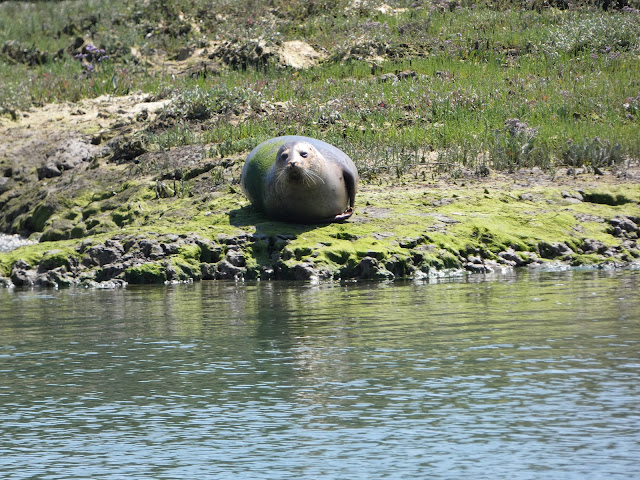






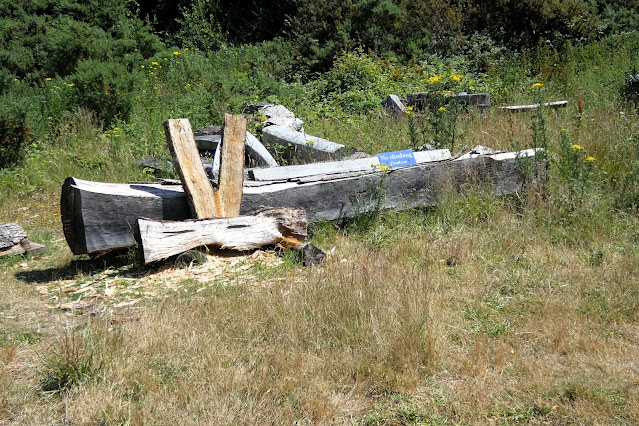









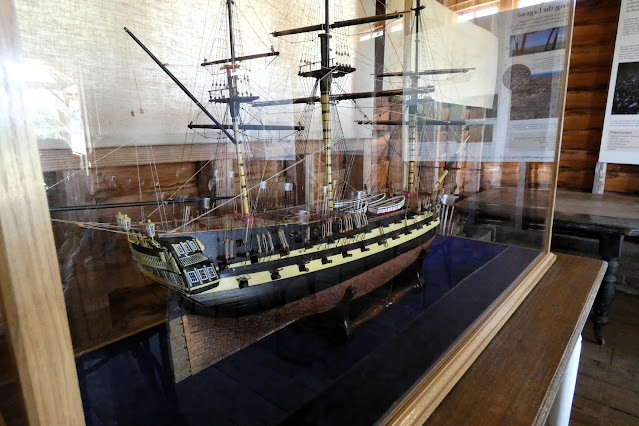












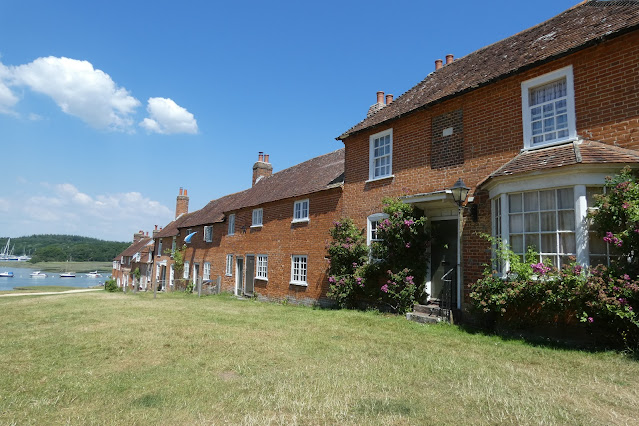


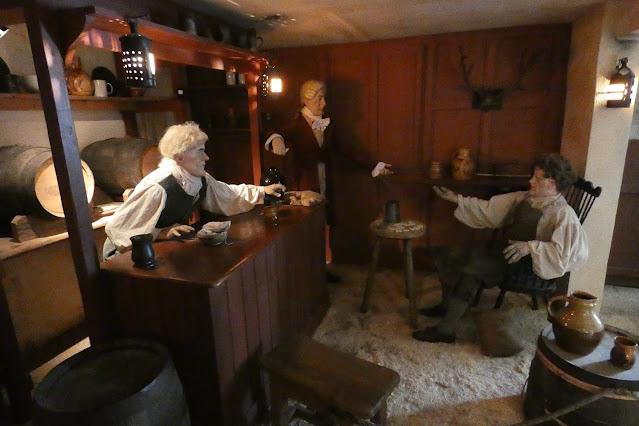













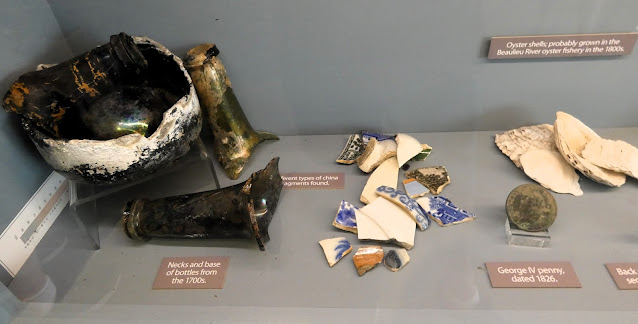




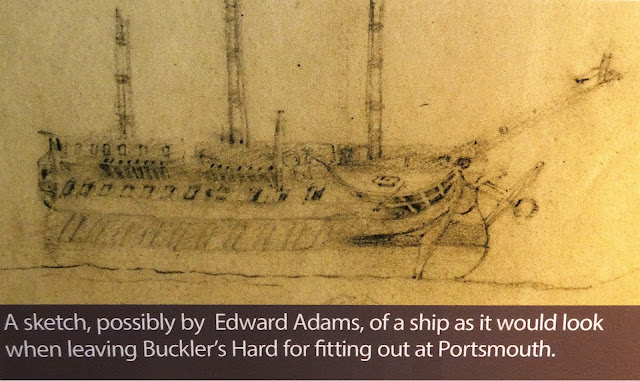





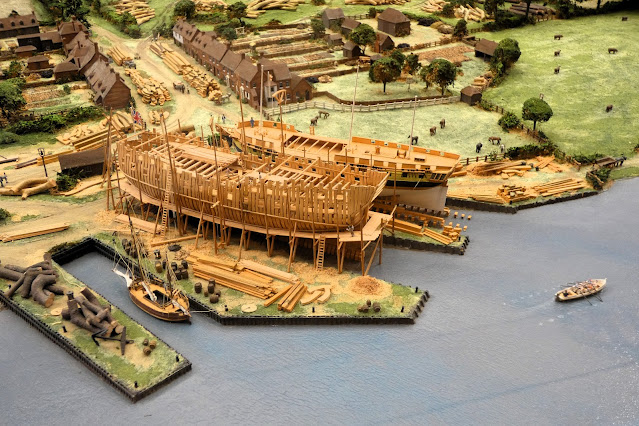





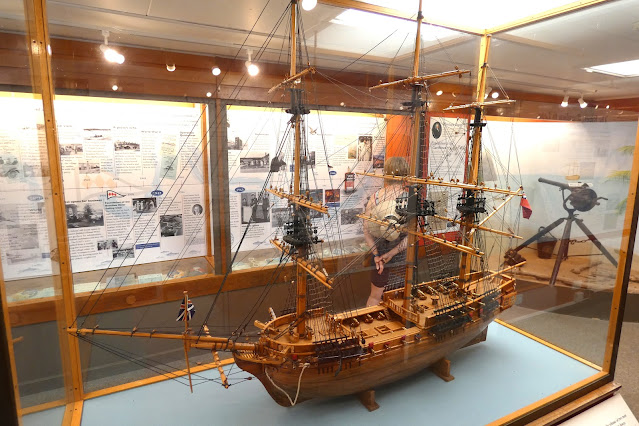




.jpg)

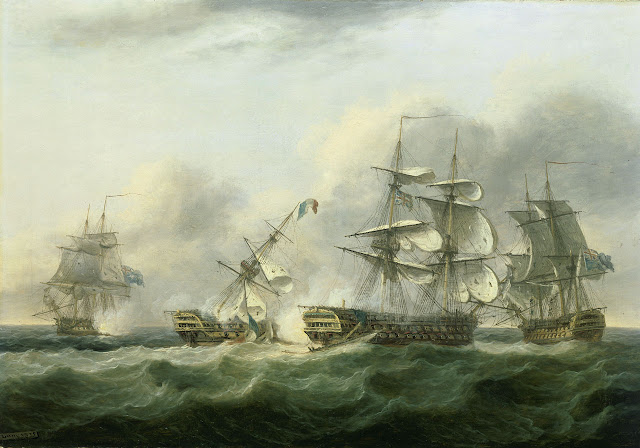




























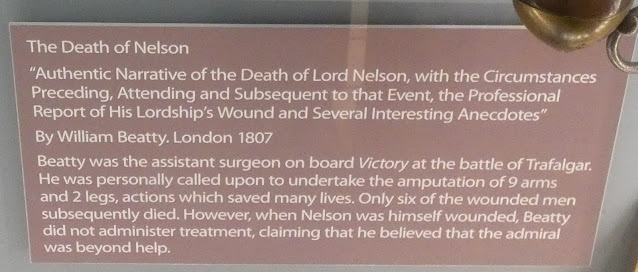







A fascinating and hugely informative post - thank you. Even if you don't have the slightest interest in our Maritime Heritage, Buckler's Hard is a delightful place to visit. If there's a chance of sun, take a picnic. The museum might be small but it has some wonderful exhibits.
ReplyDeleteJJ what a fabulous write up of a very nice trip. One that i haven't made yet, but it is now definitely on the list. Thank you.
ReplyDeletePete Scott
Hi Chaps,
ReplyDeleteThanks for your comments. Based on yours and others remarks on other forums, Buckler's Hard certainly seems to tick boxes on other folks 'Must See' list and I would heartily recommend a visit when the opportunity presents, and as you highlight Jeremy, the picnic opportunity and sheer beauty of the place will appeal to other-halves and family members less interested in the history of the place.
Cheers
JJ